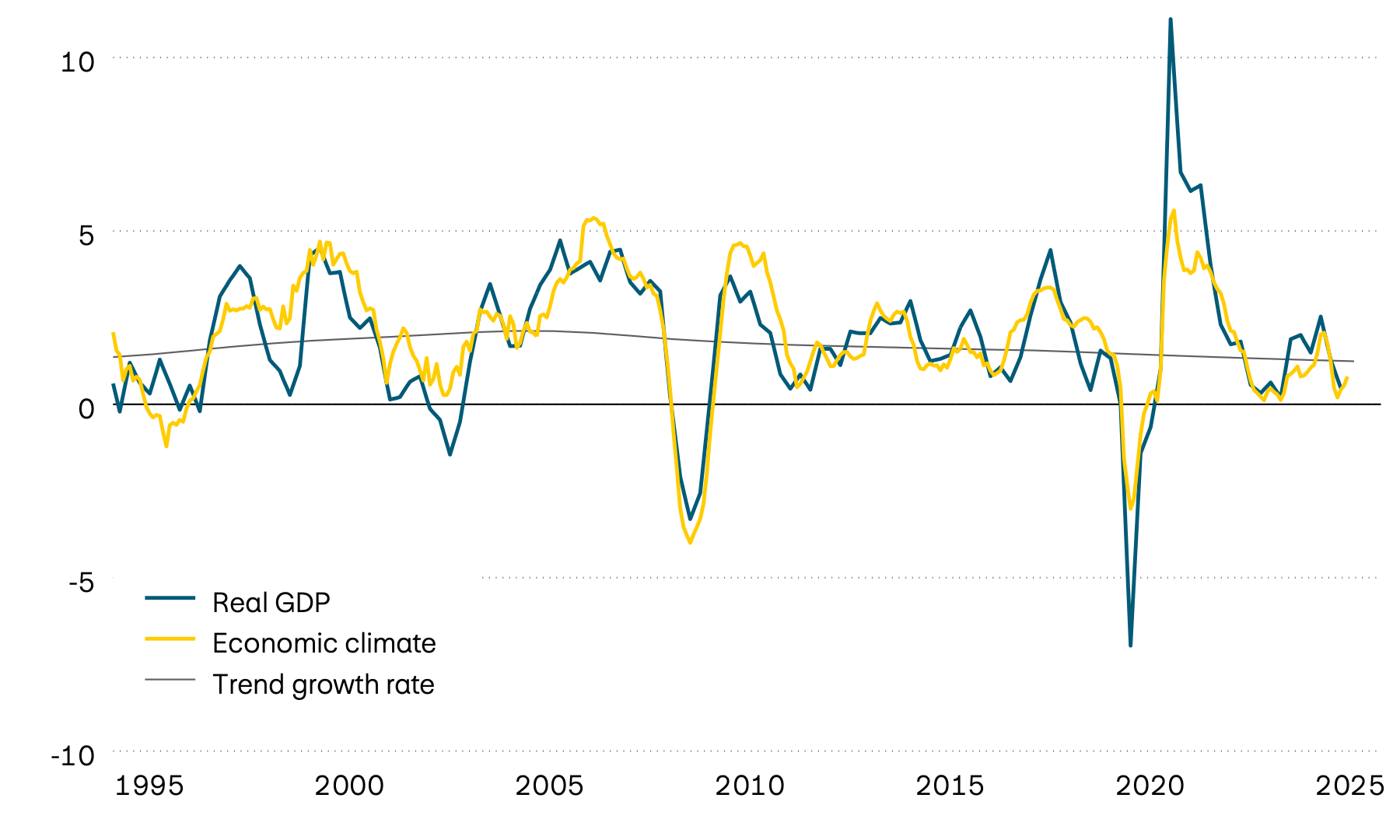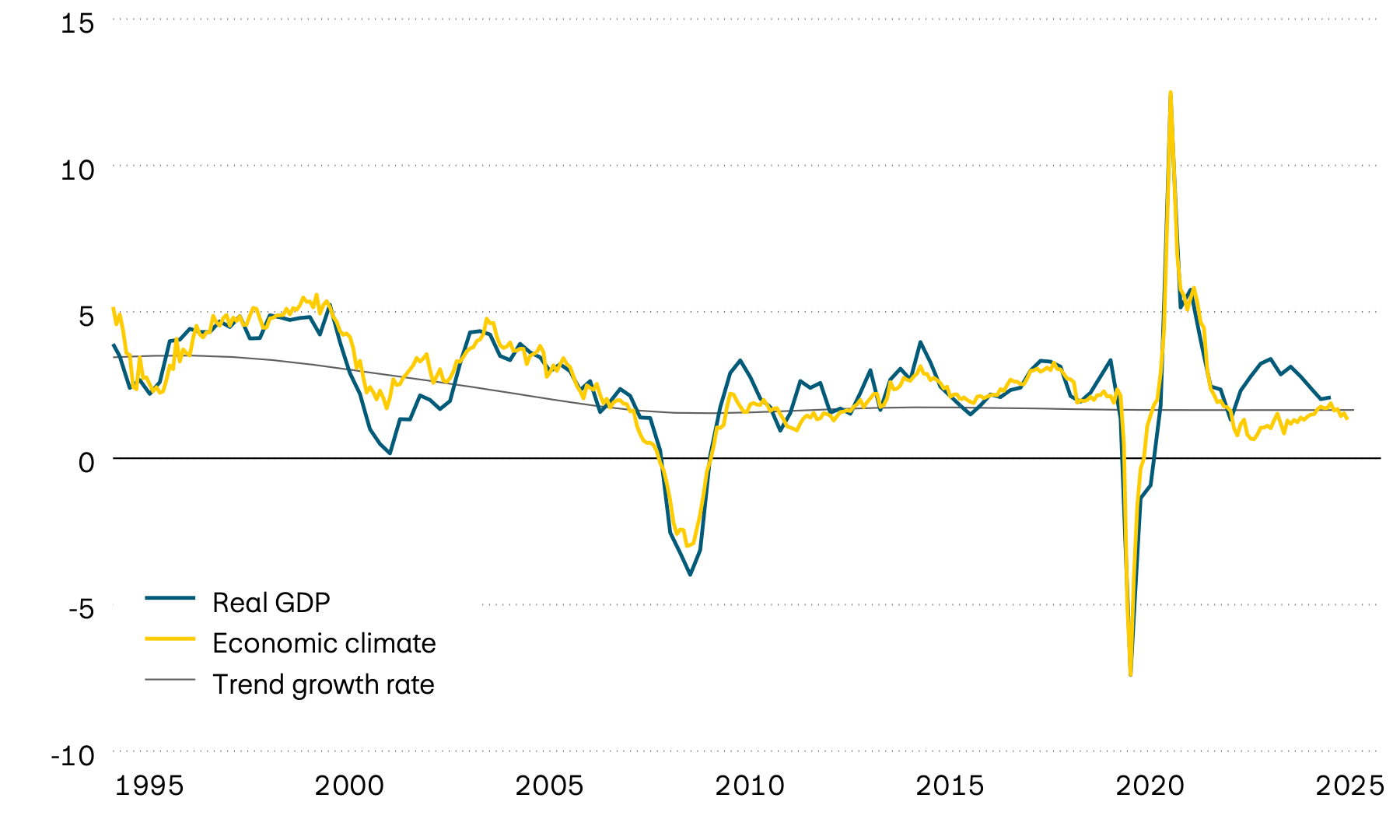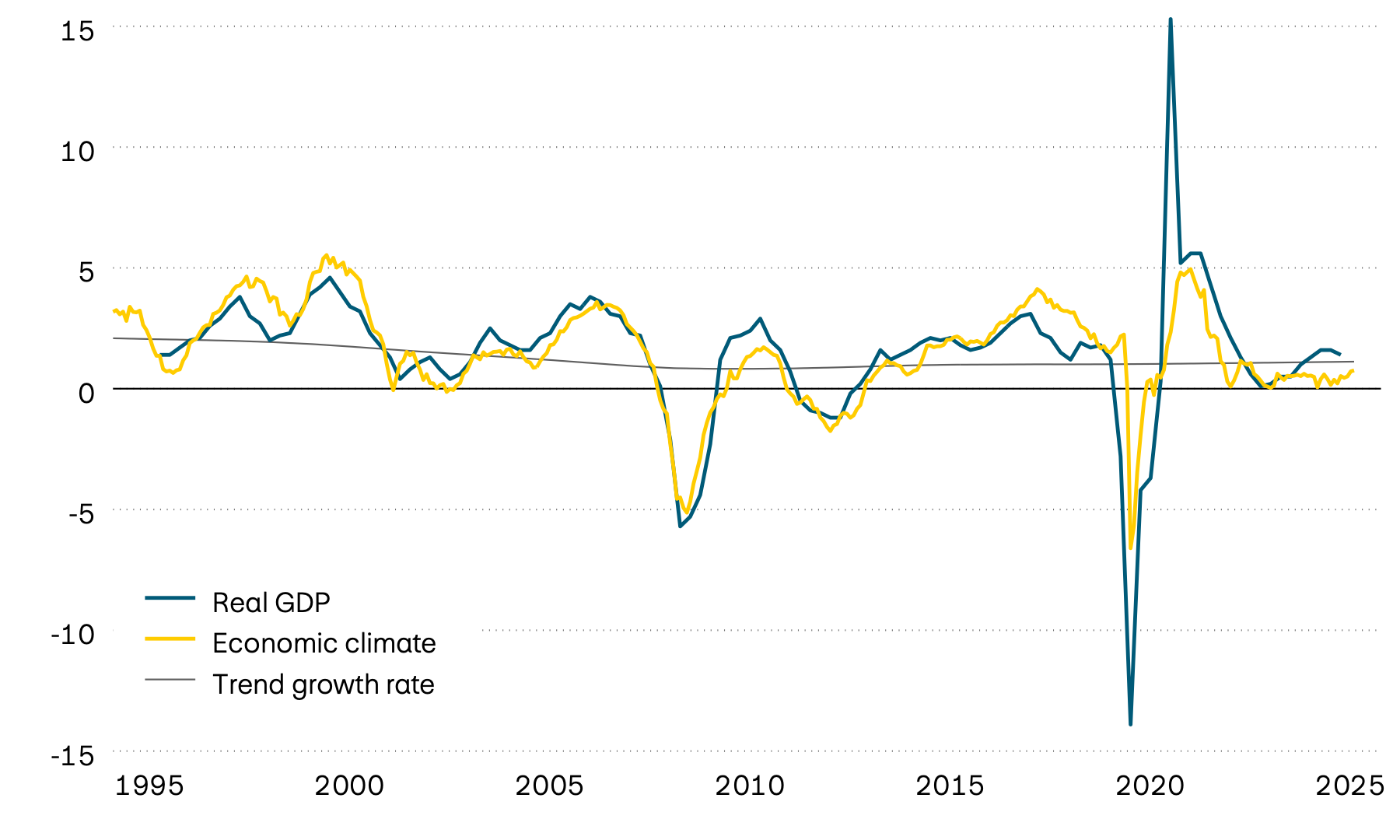According to estimates by the State Secretariat for Economic Affairs (SECO), the Swiss economy shrank by 0.5 percent in the third quarter. This was partly due to the extremely difficult conditions for foreign trade, which is facing a customs duty of 39 percent until the new trade deal comes into force. As a result, value added in the manufacturing sector fell by 3 percent. The uncertain economic outlook has also dampened companies’ and private individuals’ willingness to invest, with recovery potential likely to remain limited over the coming months. The setback has so far had little impact on consumer spending, which is once again proving to be a pillar of economic activity. Private individuals typically try to even out economic fluctuations and keep their consumption constant. In its monetary policy assessment of 11 December 2025, the Swiss National Bank (SNB) decided to leave its policy rate unchanged at 0 percent.
You are here:
Economy: Setback for the Swiss economy
The latest economic data has been disappointing, especially the figures from Switzerland. The domestic economy suffered a major setback in the third quarter and shrank considerably. Weakness in China has also become more pronounced recently. But the eurozone offers a glimmer of hope. If not for Germany, which is dragging down overall momentum due to its size and ongoing recession, the performance there would actually be above average. In addition, the initial effects of the German government’s massive fiscal package are likely to be felt next year.
Growth, sentiment and trend
In percent

Due to the prolonged government shutdown, which is now over, official economic figures from the statistical authorities for the last few months are still missing. Various economic indicators collected by the private sector are available, however, and these show an unchanged situation dominated by a downturn in industry and construction and weakness in the labour market. According to the ADP report, 32,000 jobs were lost in the US economy in November. As such, growth potential in the fourth quarter remains heavily dependent on consumer activity, for which there is hardly any reliable data from the private sector. Despite the uncertainty caused by data gaps, the US Federal Reserve decided at its meeting in December to lower its policy rate by a further 0.25 percentage points to 3.75 percent.
Growth, sentiment and trend
In percent

Overall, economic performance in the eurozone remains below average, largely due to the ongoing recession in Germany. If the figures for the monetary union are adjusted to exclude our northern neighbour, the picture looks much more encouraging, and growth is in fact above average. The rest of the eurozone is performing well. Sentiment figures for the region as a whole have also improved somewhat recently. In addition, the initial effects of the German government’s massive fiscal package are likely to become evident next year. By contrast, little progress has been made on inflation. Core inflation currently remains at 2.4 percent, which is above the target set by the European Central Bank (ECB) and limits its scope for further policy rate cuts.
Growth, sentiment and trend
In percent

Economic conditions in the emerging markets continues to vary widely from region to region. India, the second-largest emerging market economy, is still performing particularly strongly, with its economic output increasing by over 8 percent in the past 12 months alone. The situation is much weaker in China. Although the government continues to report solid growth rates, more detailed data shows that the world’s largest emerging economy is experiencing a substantial period of weakness. Investment volumes are now declining despite massive government support, consumer activity is growing much more slowly than usual, and import figures show that Chinese consumers are very reluctant to purchase goods from abroad.
Growth, sentiment and trend
In percent

Global economic data
| Indicators | Switzerland | USA | Eurozone | UK | Japan | India | Brazil | China |
|---|---|---|---|---|---|---|---|---|
| Indicators GDP Y/Y 2025Q3 |
Switzerland 0.5% |
USA n/a |
Eurozone 1.4% |
UK 1.3% |
Japan 0.6% |
India 8.2% |
Brazil 1.8% |
China 4.8% |
| Indicators GDP Y/Y 2025Q2 |
Switzerland 1.3% |
USA 2.1% |
Eurozone 1.6% |
UK 1.4% |
Japan 2.0% |
India 7.8% |
Brazil 2.4% |
China 5.2% |
| Indicators Economic climate |
Switzerland = |
USA – |
Eurozone – |
UK – |
Japan + |
India + |
Brazil – |
China + |
| Indicators Trend growth |
Switzerland 1.2% |
USA 1.6% |
Eurozone 0.8% |
UK 1.8% |
Japan 1.1% |
India 5.3% |
Brazil 1.9% |
China 3.6% |
| Indicators Inflation |
Switzerland 0.0% |
USA 2.7% |
Eurozone 2.1% |
UK 3.2% |
Japan 2.9% |
India 0.3% |
Brazil 4.5% |
China 0.7% |
| Indicators Policy rates |
Switzerland 0.0% |
USA 3.75% |
Eurozone 2.15% |
UK 3.75% |
Japan 0.75% |
India 5.25% |
Brazil 15.0% |
China 3.0% |
Source: Bloomberg
